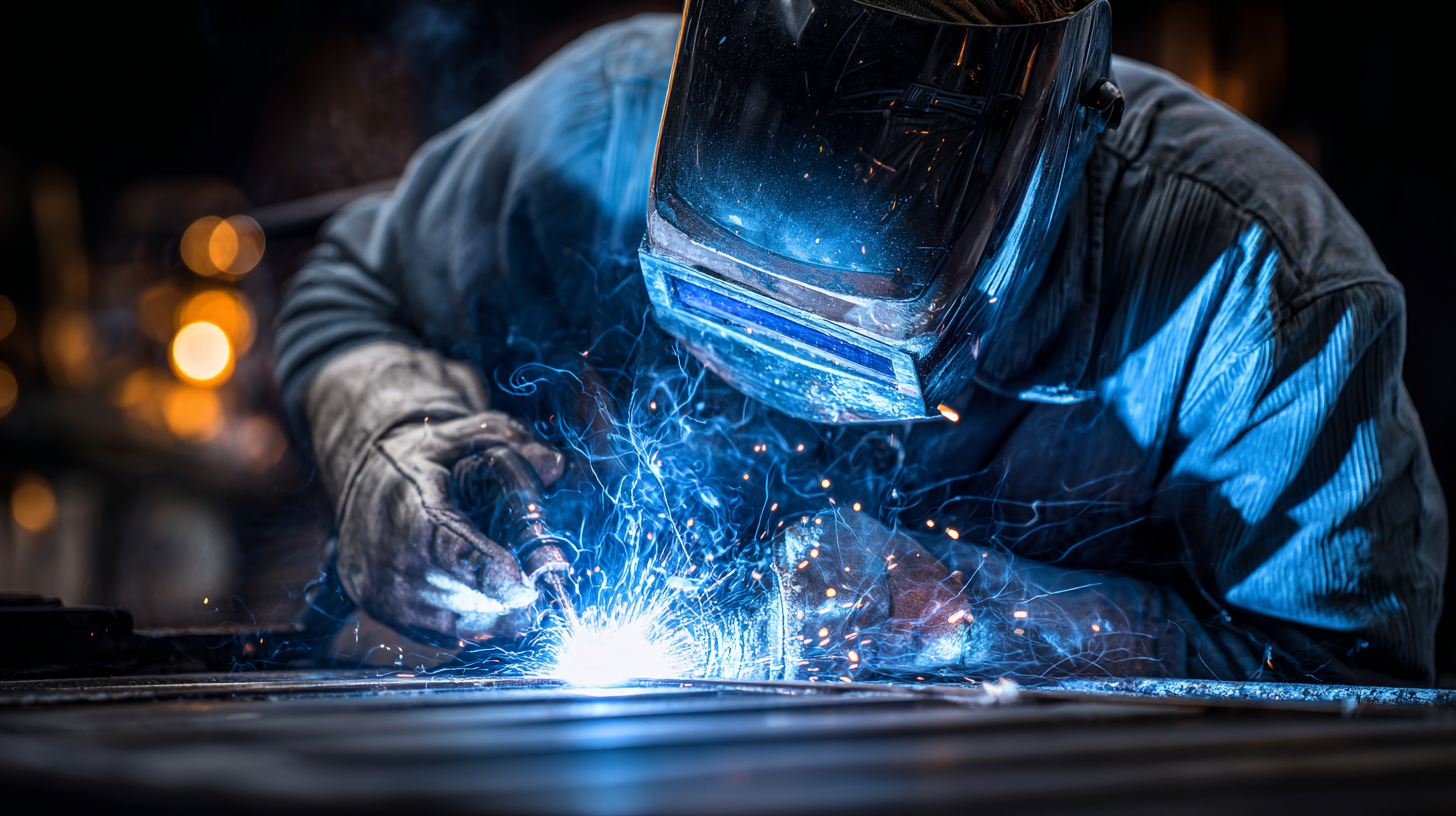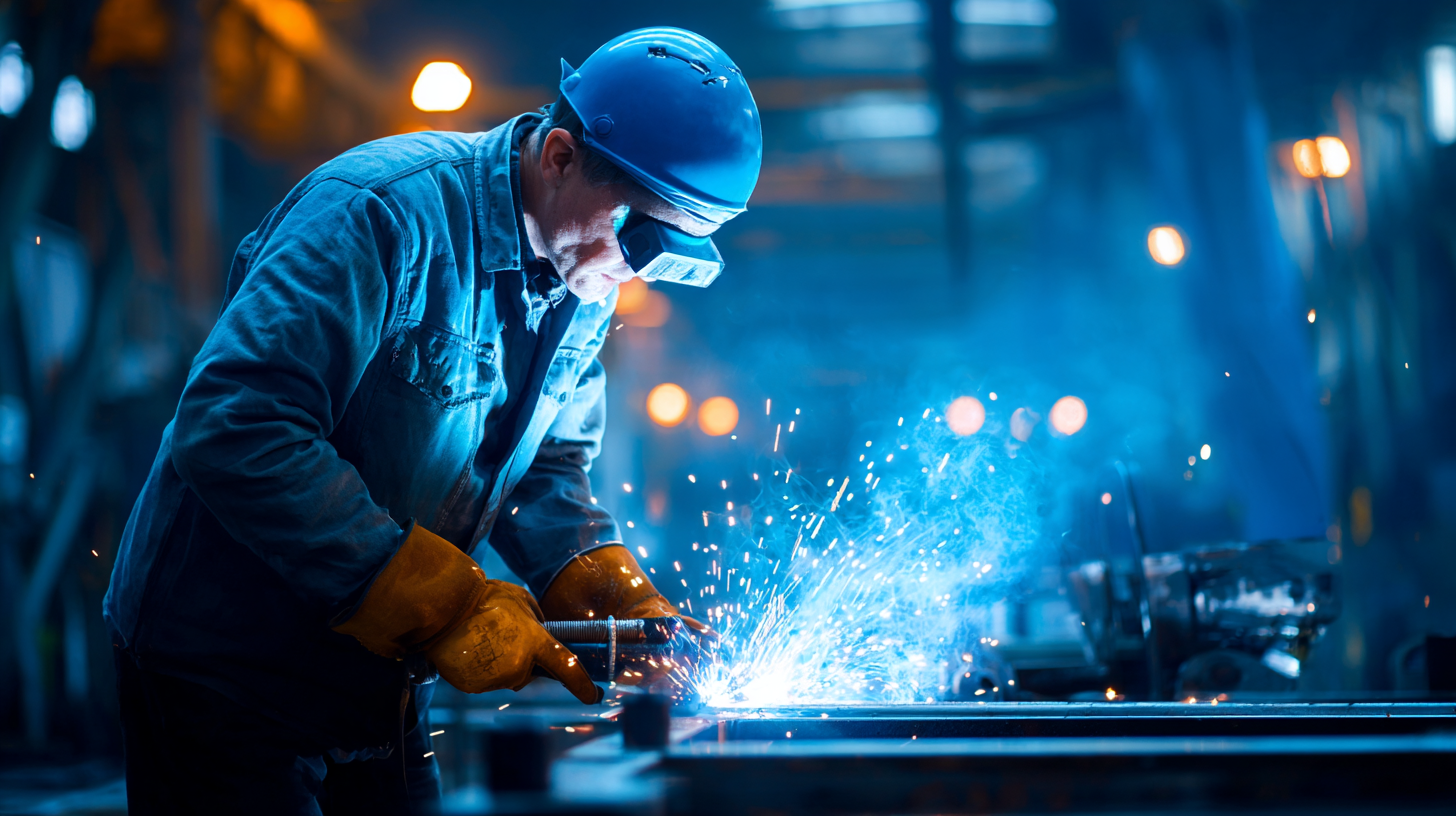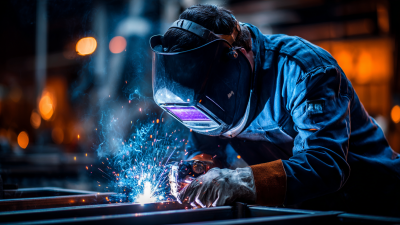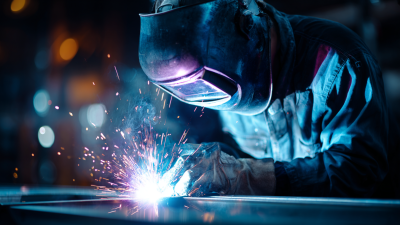In today's rapidly evolving manufacturing landscape, the Hot Welding Machine has emerged as an indispensable tool that drives efficiency and precision across various industries. According to a report by the International Federation of Robotics, over 90% of manufacturers are increasingly integrating automated solutions to enhance production capabilities, highlighting the crucial role of advanced equipment like hot welding machines in modern processes. These machines not only streamline operations but also facilitate the creation of stronger, more durable assemblies, thus ensuring higher quality outputs. With an estimated growth of 7.2% annually in the global welding machine market as per Research and Markets, the importance of hot welding technology cannot be overstated. As companies continue to prioritize innovation and productivity, understanding the benefits and applications of hot welding machines becomes vital for staying competitive in an ever-demanding marketplace.

Hot welding machines play a crucial role in modern manufacturing by providing the ability to fuse a wide variety of materials through advanced welding techniques. Their functionality is centered around multiple welding processes such as MIG, TIG, stick, and flux-core welding, enabling manufacturers to achieve different types of welds depending on the specific requirements of their projects. The user-friendly designs of these machines not only cater to experienced welders but also make it easier for beginners to familiarize themselves with welding techniques.
Furthermore, innovations in welding technology have enhanced safety and efficiency in manufacturing environments. For instance, multi-process welding machines consolidate several functions into one unit, reducing the need for multiple pieces of equipment. This not only streamlines operations but also minimizes potential risks associated with hot work. Additionally, advancements like machine learning methods for predicting temperature distribution during welding processes further improve the quality and integrity of welds, addressing challenges related to distortion and residual stress. This integration of technology into hot welding machines exemplifies their essential nature in contemporary manufacturing.
| Feature | Importance in Manufacturing | Typical Applications | Advantages |
|---|---|---|---|
| Heat Control | Ensures quality and durability of welds | Pipe installation, vehicle manufacturing | Reduces chances of overheating |
| Speed of Operation | Increases productivity in manufacturing processes | Assembly lines, manufacturing of textile machinery | Shortens production times |
| Portability | Allows for on-site welding operations | Construction sites, repair and maintenance | Increases flexibility in work locations |
| Versatility | Adapts to various materials and applications | Automotive parts, plastic bonding | Suitable for different industry needs |
| Energy Efficiency | Lower operational costs | Large-scale production environments | Less waste and reduced energy consumption |
Hot welding technology has emerged as a pivotal advancement in modern manufacturing, bringing with it a multitude of benefits that enhance production efficiency and product quality. One of the primary advantages of implementing hot welding machines is the ability to achieve strong, durable joints between materials. This technology facilitates the welding of various types of plastics and metals with precision, contributing to more reliable products that can withstand the rigors of everyday use.
Moreover, hot welding machines significantly reduce production time. The speed at which these machines operate allows manufacturers to increase output without sacrificing quality. This is particularly beneficial in high-demand industries, where rapid turnaround times are essential for meeting customer expectations. Additionally, the reduction of waste materials during the welding process not only helps in cutting costs but also supports sustainable manufacturing practices. By embracing hot welding technology, manufacturers can streamline their operations while enhancing their competitive edge in a fast-paced market.
When selecting a hot welding machine for modern manufacturing, there are several critical factors to consider to ensure optimal performance and outcomes. First, it’s essential to understand the specific requirements of your projects, including the materials you will be welding and the thickness of those materials. This will help you determine the appropriate welding process and machine specifications.

Another important aspect is the machine's capability for preheating, especially for processes involving thicker materials or those prone to cracking. Preheating is a key preparatory step that can significantly affect the quality of the weld. Evaluating the preheating methods and tools available can guide you in choosing the right hot welding machine.
Additionally, consider the integration of advanced monitoring systems. Features such as weld monitoring can help you inspect welds post-completion, ensuring they meet quality standards. With technology evolving, looking for machines with laser triangulation inspection capabilities can enhance your productivity and welding precision. Assessing these factors will lead to a well-informed decision when investing in a hot welding machine for your manufacturing needs.
Hot welding machines are vital in modern manufacturing due to their efficiency and precision. Maintaining these machines is crucial to ensure optimal performance and safety. Neglecting maintenance can lead to costly downtimes and safety hazards, especially in environments like auto body repair shops, where experts highlight the importance of overseeing welding materials such as wires and tips used in MIG and spot-welding processes.
To keep your hot welding equipment in top shape, here are some best practices:
The future of hot welding technology is poised to revolutionize modern manufacturing, driven by the increasing demand for efficiency and precision. As industries strive to adopt more sustainable practices, hot welding machines are becoming indispensable tools. They offer rapid heating and joining processes that not only reduce production time but also enhance the quality of welded joints. As manufacturers implement automation and smart technologies, the integration of hot welding systems will facilitate real-time monitoring and adjustment of welding parameters, ensuring optimal performance and consistency across batches.

Moreover, advancements in materials science are influencing the trajectory of hot welding applications. The development of new thermoplastic materials, which can withstand higher temperatures and stress, is leading manufacturers to explore innovative welding techniques. This evolution enables the production of lighter, stronger components that cater to diverse sectors such as automotive and aerospace. Future trends will likely include the incorporation of artificial intelligence and machine learning algorithms, further enhancing the capabilities of hot welding machines by predicting failures and improving operational efficiencies. These trends signal a transformative era where hot welding becomes even more critical to achieving high-quality, cost-effective manufacturing solutions.






